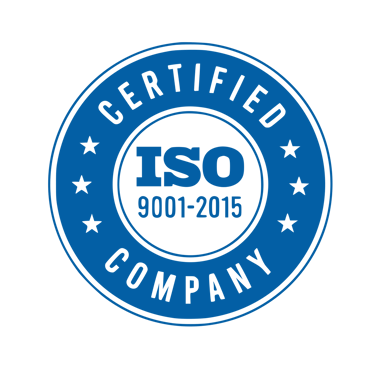Check out our new Substack, Merchandise Trade With Legion
The EAC Common External Tariff: History, Structure, and Impact
Explore the East African Community's (EAC) Common External Tariff (CET) in this detailed overview. Learn how the CET, a key trade policy, unifies import duties across EAC member states—Kenya, Uganda, Tanzania, Rwanda, Burundi, and South Sudan—to promote regional integration and economic growth. Discover the history of the CET, its three-tiered structure, and the significant benefits it brings to local industries, consumers, and the broader regional economy. Despite challenges, the CET remains a crucial tool for fostering a more integrated and prosperous East Africa.
ENGLISH
4 min read


The East African Community (EAC) Common External Tariff (CET) is a significant policy initiative aimed at fostering economic integration and growth within East Africa. It represents a unified approach to trade, ensuring that goods imported from non-EAC countries are subject to consistent tariffs across all member states. The CET has become a critical tool for protecting local industries, promoting regional trade, and driving economic development in the region. But to fully understand its impact, it's essential to delve into its history, structure, and the benefits it brings to the stakeholders involved.
History of the EAC Common External Tariff
The concept of a Common External Tariff for East Africa dates back to the early efforts of regional integration among East African countries. The first significant step towards this was the formation of the East African Community in 1967, which included Kenya, Uganda, and Tanzania. However, the original EAC collapsed in 1977 due to political differences and economic disparities among the member states.
The idea of a unified trade policy was revived with the re-establishment of the EAC in 2000, this time including Rwanda and Burundi in 2007, and South Sudan joining later in 2016. The CET was formally introduced in 2005 as part of the EAC Customs Union, which aimed to create a single customs territory among the member states. This was a major milestone, marking the beginning of a coordinated approach to external trade.
The introduction of the CET was intended to eliminate internal tariffs among the EAC member states, allowing goods to move freely within the region. At the same time, it established a common tariff structure for goods entering the EAC from non-member countries. This policy was crucial for protecting the emerging industries within the EAC while promoting regional economic integration.


Structure of the EAC CET
The EAC CET is based on a three-band tariff system, designed to encourage local production and industrialization. The three bands are:
Raw Materials: 0% tariff - This band covers goods that are essential for local production processes but are not available locally in sufficient quantities. By imposing no tariffs on raw materials, the EAC aims to reduce the cost of production for local industries, making them more competitive.
Intermediate Goods: 10% tariff - Intermediate goods are products that require further processing before they can be used by consumers. The 10% tariff on these goods is meant to strike a balance between protecting local industries and allowing access to necessary inputs for production.
Finished Goods: 25% tariff - Finished goods are products ready for consumption. The 25% tariff is the highest, designed to protect local industries from competition with imported goods, thereby encouraging the production of finished products within the EAC.
This tariff structure is a strategic tool to promote local manufacturing and reduce dependency on imports. By incentivizing local production, the CET contributes to the economic growth of the region and the development of local industries.
Benefits of the EAC CET
The EAC CET brings several benefits to various stakeholders, including local industries, consumers, and the broader regional economy.
1. Protection for Local Industries:
The CET shields local industries from cheap imports that could undermine local production. By imposing higher tariffs on finished goods, it encourages local manufacturing and reduces competition from external markets. This protection helps local businesses grow and become more competitive, ultimately contributing to the region's economic resilience.
2. Promotion of Regional Trade:
The CET eliminates internal tariffs among EAC member states, facilitating the free movement of goods within the region. This promotes intra-EAC trade, creating a larger market for locally produced goods and services. As a result, businesses across the region can benefit from increased trade opportunities and a more integrated market.
3. Benefits for Consumers:
Consumers benefit from the CET as it promotes the availability of locally produced goods. With the growth of local industries, consumers have access to a wider range of products, often at lower prices due to reduced competition from imports. Additionally, the expansion of local industries creates job opportunities, further boosting the region's economy.
4. Economic Integration and Growth:
The CET plays a crucial role in the broader goal of economic integration within the EAC. By harmonizing external tariffs, it creates a level playing field for businesses across the member states. This uniformity is essential for building a more integrated and prosperous East African economy.
Challenges and Future Outlook
While the EAC CET has brought numerous benefits, it is not without challenges. Issues such as tariff evasion, inconsistencies in enforcement, and disparities in the implementation of the CET among member states pose significant hurdles. These challenges can undermine the effectiveness of the CET and hinder its potential to drive regional economic growth.
However, the future of the EAC CET remains promising. Continued efforts to harmonize trade policies, improve enforcement, and address the challenges will be crucial in ensuring the CET's success. As the EAC continues to evolve, the CET will remain a vital tool in achieving the region's economic goals.
Conclusion
The EAC Common External Tariff is more than just a trade policy; it is a catalyst for regional integration, industrial growth, and economic resilience. By harmonizing tariffs and promoting local industries, the CET has the potential to transform the East African region into a thriving economic bloc. While challenges remain, the continued commitment of EAC member states to this policy will pave the way for a more prosperous future for all stakeholders involved.

